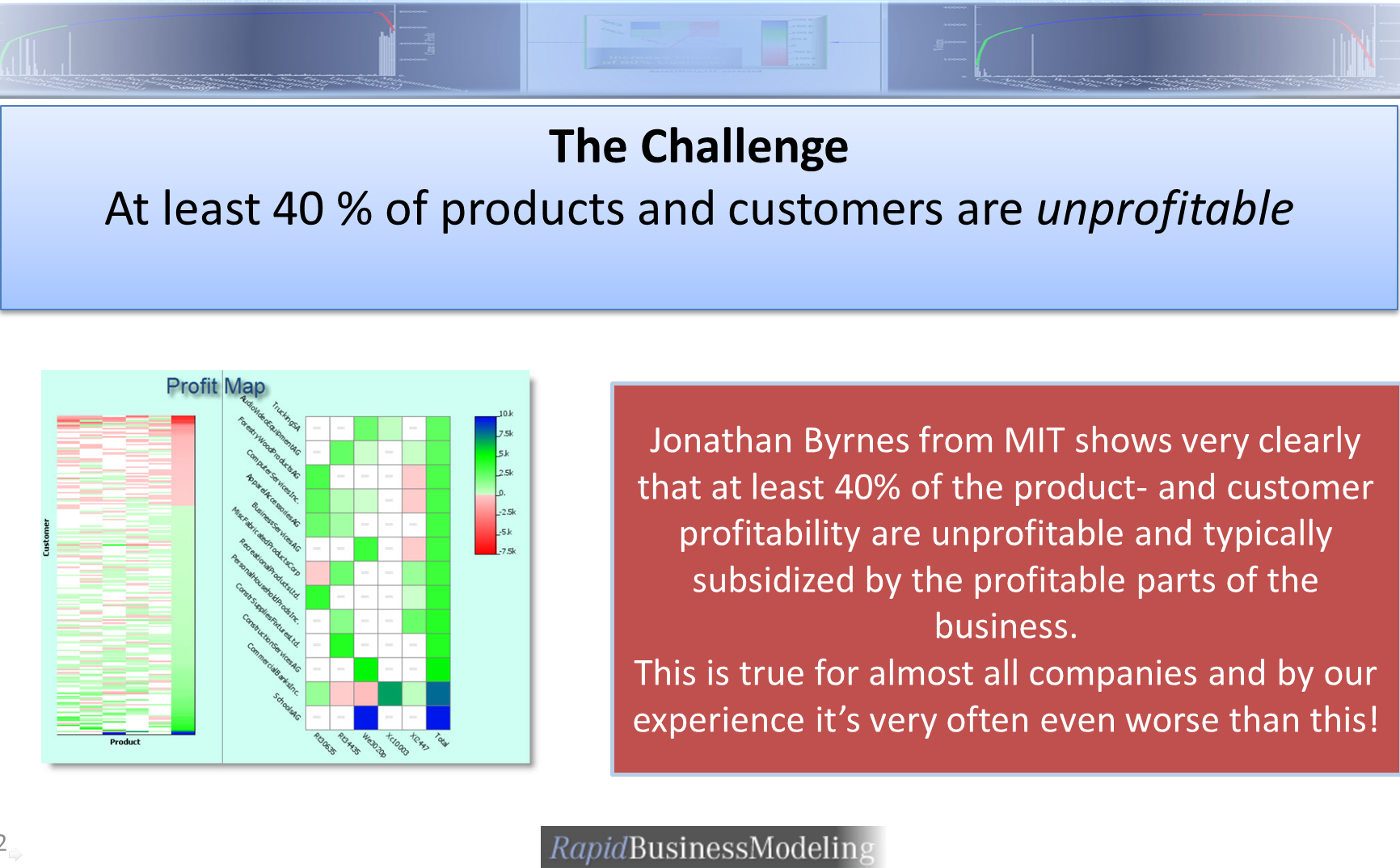At least 40% of the products and customers are unprofitable
Jonathan Byrnes (1) from MIT shows very clearly that at least 40% of product and customer profitability is not profitable and these areas are subsidized by the profitable business sectors. This applies practically to all companies and de facto the situation of our experience is even more dramatic! (2)

That this is so and most entrepreneurs and leading managers just have little insight, has several reasons:
The calculation of earnings before interest and taxes (EBIT) shows you only one figure for your entire business but no profit and loss account per product or per order or per customer or sales channel, etc.
The result is that you do not have all the unprofitable products and customers on the screen!
And you know “If it can’t being measured it can’t being done!”
So if your business contains around 40% of unprofitable areas, you have two ways to change this.
1.) You ensure that you are making more sales on a similar scale.
2.) Make your non-profitable areas profitable!
In order to make more sales, you must also have the available capacity. However, it is often the case that all your resources are already fully utilized. This is especially true for your hardware and not just for your staff, which could be jacked up if necessary.
So to balance the profit here, you would have to invest heavily, train, and take some new uncertainties, so that your bottom line balances the 40% loss.
Now, however, it is highly likely that you will not necessarily want to expand your range of issues, and it would probably be very beneficial if a few of these problems were to disappear forever. This would enable you and your management to better develop your business strategically. This means you want to work on your company and not necessarily inside-be worn out in the details of the day to day business.
RBM’s multidimensional business modeling enables you to gain 360 ° visibility into your actual product costs and profitability.
The same applies to your customers and sales channels or to any other dimension that is important to you.
In a three-day workshop, we will get you up to speed regarding your business profitability as is vs. it could by using our knowledge combined with RapidBusinessModeling’s solution.
In that workshop you will learn to build a detailed RapidProtoTyping Business Model providing transparency of the profitable and non-profitable parts of your business, systematically analyze them and make them profitable with appropriate measures.
One example of this is the multidimensional simulation of business areas. We have developed powerful analytical techniques that show you practically at the touch of where “the music plays” and where your profits are eroded and how best to fix this. We will show you how to create a detailed RapidProtoTyping Business Model of your company within these three days.
Depending on the data situation, you will ideally be able to have your complete multidimensional company model available say within a few weeks to determine your actual manufacturing costs and the resulting actual profitability for all your products and customers. This allows you and your team to significantly increase your business profit by either turning your unprofitable customers or products into profitable ones and only as a last resort eliminate them.
Industry sectors it applies to:
Manufacturing industry, call centers, services of all kinds
Who should attend?
Managers of all C levels, business analysts, entrepreneurs, open-minded for new methods.
Program overview:
- Activity Based Costing Methods. Basics about the methods, but this is not an introductory course to learn the details, but we work on your own examples and you sit very early in the driver’s seat!
- Learning all about the ease of generating a detailed RapidProtoTyping Business Model for your business.
- Ideally using an IPad via an Amazon Web Service we provide in order to build your detailed RapidProtoTyping Business Model- an amazing experience!
- Uncertainty impact- shown by means of a Monte Carlo analysis onto products and customer costs.